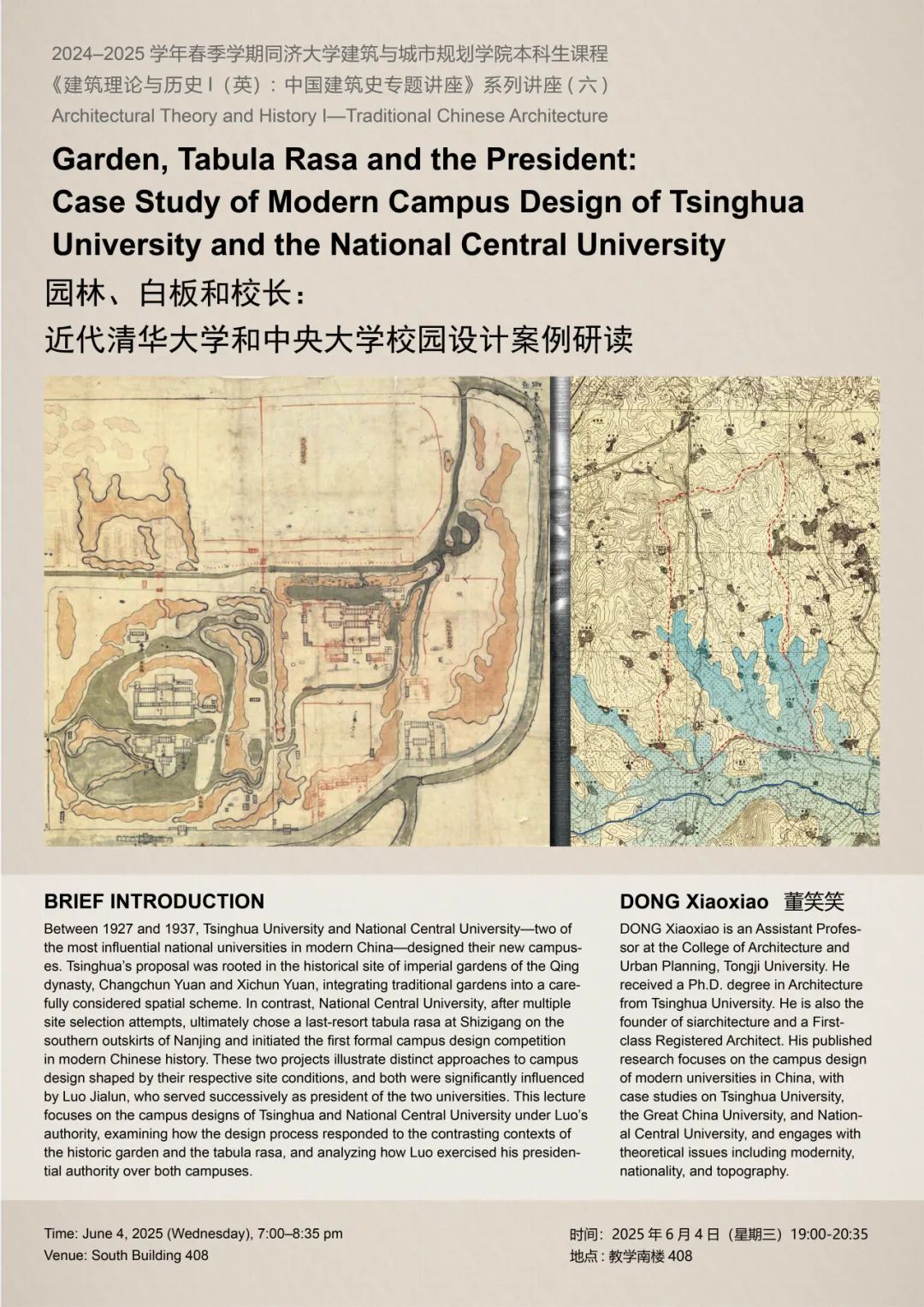
Architectural Theory and History I:
Traditional Chinese Architecture
Garden, Tabula Rasa and the President: Case Study of Modern Campus Design of Tsinghua University and the National Central University

Lecturer
DONG Xiaoxiao
DONG Xiaoxiao is an Assistant Professor at the College of Architecture and Urban Planning, Tongji University. He received a Ph.D. degree in architecture from Tsinghua University. He is also the founder of siarchitecture and a First-class Registered Architect. His published research focuses on the campus design of modern universities in China, with case studies on Tsinghua University, the Great China University, and National Central University, and engages with theoretical issues including modernity, nationality, and topography. His dissertation centres on pre-Tang and Song-era Chinese architectural terminology, aiming to return to the philology and phonology of terms in order to uncover the “yingzao” thinking and episteme embedded in the traditional Chinese academic system, particularly in the fields of “jingxue” and “xiaoxue”.
Brief Introduction
Between 1927 and 1937, Tsinghua University and National Central University—two of the most influential national universities in modern China—designed their new campuses. Tsinghua’s proposal was rooted in the historical site of imperial gardens of the Qing dynasty, Changchun Yuan and Xichun Yuan, integrating traditional gardens into a carefully considered spatial scheme. In contrast, National Central University, after multiple site selection attempts, ultimately chose a last-resort tabula rasa at Shizigang on the southern outskirts of Nanjing and initiated the first formal campus design competition in modern Chinese history. These two projects illustrate distinct approaches to campus design shaped by their respective site conditions, and both were significantly influenced by Luo Jialun, who served successively as president of the two universities. This lecture focuses on the campus designs of Tsinghua and National Central University under Luo's authority, examining how the design process responded to the contrasting contexts of the historic garden and the tabula rasa, and analyzing how Luo exercised his presidential authority over both campuses.
Time
June 4, 2025 (Wednesday) , 19:00–20:35
Venue
South Building 408
 ABOUT US
ABOUT US




